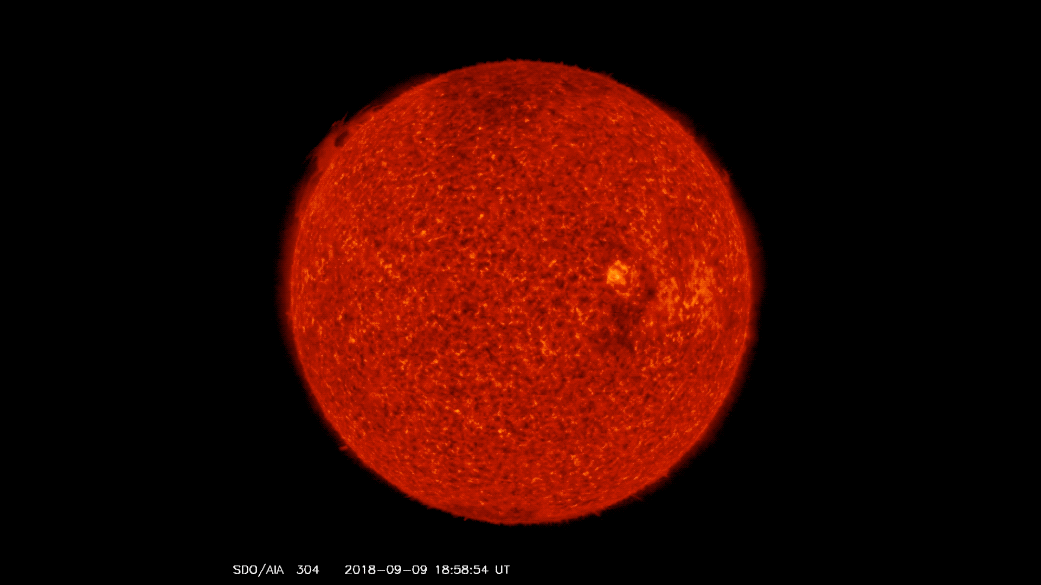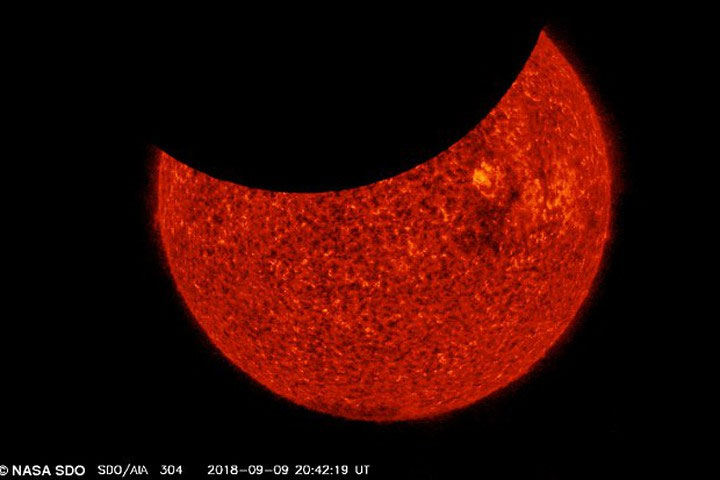Poison from NASA: twice
That rare moment is actually the moon "eating" the sun but not necessarily the solar eclipse because it is observed on the spacecraft, not the earth.
The amazing animation NASA has just shared is made up of many continuous sun images of Solar Dynamics Observatory (SDO), an astronomical observatory placed on a self-propelled spacecraft.
On Earth, of course, we cannot see two consecutive solar eclipses because the moon's rotation speed around the earth does not allow it to interrupt the earth and the sun for the second time of the day.

Exciting animation is a quick movie showing two observed solar eclipses from SDO - (photo: SDO - NASA).
However, the SDO spacecraft is also an object revolving around the Earth, so with a bit of luck, it caught the moment when the moon was between it and the earth. Rather, it was 2 times SDO accidentally entered a straight line through the sun and the moon, because it rotated much faster than the moon.
The moon has a speed around 3.683km / hour, while SDO has a narrower trajectory and speeds of more than 11,000km / hour.
NASA said this image was taken from 9/9 and thoroughly researched before publication. The first "solar eclipse" is a "total solar eclipse" that occurs from 4:30 to 5:30 local time, the second time the moon only covers 34% of the sun and starts at 9 o'clock, lasts 49 minutes.
One note is that SDO has captured this image in ultraviolet conditions so even if you are present on this spacecraft, you cannot observe the image.

Photo: SDO - NASA
SDO was launched in 2010 with the task of solar research and collected for NASA to live valuable data.
However, SDO is about to be replaced by - a better warrior is launched into space 1 month ago. Parker Solar Probe carries a task that can be permanent because it can withstand the sun's heat and can last for billions of years, even when the solar system has disintegrated. In the immediate future, it will have to complete an immediate task of 24 turns around the sun for 7 years. The latest update published by NASA a week ago said it was still on its way to the sun and was 16.27 million miles from Earth.
- The power of poison
- The mystery of the poisonous killing killing more than 600 men, only 4 drops is dead without a trace
- Animals that steal the poison of another species
- Difficult questions: Is the poison at the expiration date no longer toxic or even more dangerous?
- Chinese medicine 'poisoning' poison ... poison
- Video: Lifeguards help elephants get hit by poison
- Ancient poison named after
- NASA wants to turn the iPhone into a poison warning tool
- Process of injecting poison for death row inmates
- The sea snail and the story take poison poison
- Why do poison frogs produce sugar and bile in the skin?
- Poisoning - The most sophisticated method of causing murder in history
 Van Allen's belt and evidence that the Apollo 11 mission to the Moon was myth
Van Allen's belt and evidence that the Apollo 11 mission to the Moon was myth The levels of civilization in the universe (Kardashev scale)
The levels of civilization in the universe (Kardashev scale) Today Mars, the sun and the Earth are aligned
Today Mars, the sun and the Earth are aligned The Amazon owner announced a secret plan to build a space base for thousands of people
The Amazon owner announced a secret plan to build a space base for thousands of people